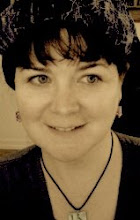Caroline M. Alston, Eliza Alston, and Emily Alston are all listed as being from Warren County NC, and are all listed with "Th. W. Alston" as their guardian in the ledger. Caroline attended from the school's opening in 1809 through the end of 1811; Eliza was only there for 1809; Emily was there one term longer than Eliza, leaving in mid-1810.
Martha Alston is listed with Alfred Alston as the adult on the account; she attended after the girls above, and for much longer than any of them, being at the school from early 1812 until mid-1817.
Charity D. W. Alston is listed with an H. G. Williams possibly associated with her account. She was at the school for half of 1812, then returned later for three terms, 1814 through mid-1815.
Alston's a common North Carolina name--when I taught in Durham, I had several students named Alston. Because there were so many Alstons in Warren County and surroundings, and because many names were recycled within and between generations, it's hard to pin down which girls these are in the family trees. Warren County records show a Charity D. Alston assigned to Robert T. Cheek as her guardian in 1807 (he payed her board and tuition that year). Same records show a Joseph J. Williams assigned as guardian of a Caroline Alston, "orphan," in 1808. The guardian of the first three girls is probably Thomas Whitmel Alston--but there were at least a couple men with that name floating around!
The Alstons are related in various ways to the Norfleets, the Plummers, the Branches, and other families who sent children to the Mordecai school. More on them later.
***
Martha Alston was, according to the Mordecais' family correspondence, a Warrenton girl; she was a local and one of the school's longest-running students. As such, the Mordecais took a stronger interest in her life after school. In 1821, teacher Caroline Mordecai Plunkett referred to her as "good natured in appearance" and "handsome." We learn from family letters that Martha was sent to Philadelphia in 1822. In 1824, she married a Mr. Burgess (fellow Mordecai alumna Lucy Plummer Battle attended the wedding). In 1850, Lucy Plummer Battle visited with Martha and her daughter (Lucy Burgess) while staying in Warrenton.
Heading back into the genealogical websites, Martha Alston's husband was a John Burford* Burgess (or Burges), b. c. 1797. In the announcement of their marriage bond, Martha is referred to as "daughter of the late Thomas Alston." This researcher has her as Martha Janie Alston, born in 1802 as daughter of Thomas Whitmell Alston (1756-1809), and Lucy Faulcon (1763- ). This makes her the sister of Alfred Alston (1791-), who married another Mordecai girl, Mary Ann Plummer (1795-).
*UPDATE (9/7/10): Jordan Kearney, a reader and descendant of Martha Alston, sends this correction and further information (with promise of further information):
"The three other Alstons were Elizabeth Alston, Caroline Medora Alston and Rebecca Emily Alston, all daughters of Samuel and Elizabeth Faulcon Alston...They were double first cousins to Martha Jane Alston Burges. I also have information concerning Rebecca and Lucy Ballard....John Lovatt Burges was the husband of Martha Jane Alston."
Thank you, Jordan Kearney! The whole idea of putting up this blog is to tap into the wealth of information that family historians and others have, and gather it here for a fuller picture of the Mordecai students as a cohort. I appreciate your contributions and look forward to further exchanges.
